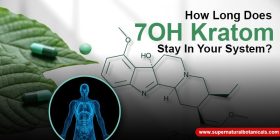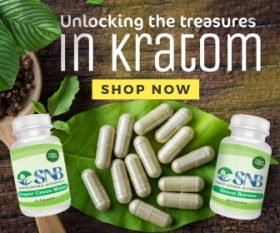As a newcomer to the Kratom community or someone investigating the plant on an academic level, you may have many questions. Asking about independent Kratom lab testing is a crucial step. We believe it is essential for Kratom buyers to have reliable information about the items they purchase and the sellers they patronize. You’ll need some background info on what goes into Kratom lab testing, how businesses do such tests, and why the results matter so much to accomplish this. Let’s dive in!
What is Kratom Tested For, and Why Does it Matter?
Kratom, like other botanicals, may be tested by a reputable lab to confirm its contents. These are the most prevalent reasons labs test Kratom:
- Kratom product authentication
- No pathogens or contaminants
- The sample had little heavy metal.
- High Mitragynine and 7-Hydroxymitragynine content
- Alkaloid evidence
Store-bought Kratom has less than 2% mitragynine. Most drugs contain much less 7-hydroxymitragynine unless they are tinctures or extracts. Kratom may be infected with mold, yeast, salmonella, and other pathogens if the seller hasn’t taken care. Finally, examine Kratom for heavy metals like lead, mercury, arsenic, etc.
Kratom vendors submit samples to a lab for examination to ensure safe goods. Kratom lab testing is required for customer safety and product quality. Thus, providers must regularly evaluate their goods for safety and effectiveness. If they don’t test, they risk selling contaminated goods. Kratom, like other consumables, must be tested before sale.


Procedure for Kratom Lab Testing
A Kratom product goes through a battery of testing at an independent lab to verify that it contains just the components listed by the manufacturer.
Reputable vendors send samples of Kratom to a third-party lab for testing before the powder or crushed leaf Kratom is delivered to the customer. The samples are examined for alkaloid content, label transparency, and harmful elements like mould, coliforms, or other pathogens.
When a lab examines a sample for microbes like diseases or mold, an excellent picture of the harvesting methods is provided. If laboratory researchers find either of these diseases in the sample, it is obvious that employees did not select the leaves from the tree but rather off the ground. It might also indicate improper storage, resulting in moldy, wet Kratom.
Make sure the product you’re purchasing is 100% Kratom leaf and devoid of dangerous ingredients by requesting a detailed report.
Need For Independent Third-Party Kratom Lab Testing
Laboratory testing of kratom products is incredibly significant for many different reasons. This need includes the fact that there is a hazard in consuming untested kratom. Therefore, there is a need to protect the general public’s health. Kratom lab testing ensures that no germs, metals, or poisonous substances are consumed.
Moreover, the Food and Drug Administration (FDA) requires that all legal kratom be lab-tested. Thus, for compliance with rules and regulations, kratom must be tested. Additionally, it is important to test kratom for continued access while fostering an ethical business environment. It ensures that there is no moral dilemma while purchasing it.
Selecting the Right Lab For Testing
One of the most important decisions a Kratom vendor can make is the testing facility they will choose for their product. Using a meticulous, reputable laboratory that has been in business for years and is equipped with cutting-edge equipment might decide whether the findings are genuine.
Kratom merchants must put their goods via rigorous testing at reputable labs. It is important to choose labs that test Kratom to be independent, meaning that they are not affiliated with any particular Kratom vendor or firm or non-incentivized. This indicates that the laboratory was not paid for producing any particular test findings.
Kratom Lab Testing Requirements
Testing in laboratories is not mandated in many countries, despite the significance of the practice. Because federal laws do not now regulate Kratom, the regulations for possible fillers and impurities are rather relaxed. Many manufacturers choose not to do laboratory testing due to the high cost of doing so.
To join some Kratom groups, you are required to pass severe lab tests. The American Kratom Association (AKA), one of these organizations, offers a certification procedure requiring laboratory testing as part of its requirements. However, the Food and Drug Administration (FDA) does not require this. For AKA, Good Manufacturing Practice (GMP) program participants are held to the industry’s high quality and safety requirements.
How To Interpret Kratom Lab Testing results?
Reading and analyzing test findings may be a time-consuming process. In addition, you should be able to read and comprehend these findings easily so that you may purchase and utilize tested Kratom without risking your health.
What you ought to do is as follows:
- Make sure that an independent, accredited laboratory, not the vendor, is in charge of conducting the laboratory testing. Independent Kratom lab testing is more credible and legitimate than in-house testing. So when reviewing the Certificate of Analysis, check to see the lab’s name at the top of the report.
- Make sure that the Kratom in the product is of the proper strain, that it has been tested in a lab, and that the packaging has a lot of numbers. Avoid anything that seems generic since it can point to strains that have not been evaluated.
- Check dates on the Kratom lab test results to ensure that the items you’re buying have been tested relatively recently. This is especially important if you know that the vendor just procured a new batch of Kratom, but the dates on the lab result are old. If this is the case, know that the substance being sold to you is untested.
- Examine the sample for the presence of heavy metals. These dangerous substances are present in the environment and can get into Kratom through soil and water. According to the lab result, Kratom was tested for heavy metals: Arsenic, Mercury, Lead, Nickel, and Cadmium. The presence of these metals below certain thresholds is not alarming. However, if concentrations are high, it can be highly hazardous to human health.
- Look at the alkaloid content on the lab result. In some states, the Kratom Consumer Protection Act requires the 7-hydroxy mitragynine content to be less than 2% of the total alkaloid content. Because the Kratom powder being tested contains more than just alkaloids, the required percentage should be less than 0.1% on the lab result. The result shows an acceptable percentage of 7-hydroxy mitragynine content (0.0250%).
- Review the lab result for pathogens. The result must contain information regarding pathogens such as Yeast, Mold, Salmonella, E.coli, and Coliforms. The presence of these pathogens in trace amounts is acceptable because the human body can handle them. Pathogens are primarily a concern when they exceed permissible levels.
Click Here To Read More About Kratom Quality Testing
Are Kratom Lab Results Always Accurate?
A kratom laboratory test may be inaccurate for a variety of reasons:
- Many kratom vendors have not established systems to ensure that all packages within a shipment come from the same consistent batch. Within the same shipment, it is conceivable that individual boxes were milled on separate days. Therefore, even within the same shipment, there may be variations in the freshness and provenance of the Kratom inside individual boxes.
- Vendors should not mix the leaves when supplying Kratom leaves. This implies that a solitary box’s sample could not indicate the contents of the shipment.
- Most herbal powders have bacterial hotspots. Consequently, a sample collected from a clean location within the same box may pass lab testing, whereas a sample taken from a hot spot within the same box would result in a failed test unless the kratom powder is mixed before sampling.
Other Factors to Consider While Purchasing Kratom
While lab testing is just one factor, there are other things you should look for while buying Kratom. If you’re looking to purchase Kratom online, you should ensure that the vendor is the American Kratom Association and is FDA-approved. To provide consumers with risk-free Kratom, the AKA has established the Good Manufacturing Practice (GMP) Standards Program, which all certified suppliers must adhere to. The program lays out manufacturing, testing, packing, labeling, storage, distribution, marketing, and verification standards in detail. You should also ensure the firm has a good reputation in the kratom industry and that the packaging is secure and high-quality.
Conclusion
Kratom, like the food and water you put into your body, ought to be harmless and beneficial. If you want complete peace of mind, you should read the manufacturer’s materials and study the testing findings. Perhaps you’ll get some insight into the subtle but significant differences among Kratom strains.


Heather lives with her husband and two children in beautiful British Columbia. Her passion has always been to enhance the lives of others by helping them reach their own personal goals and accomplishments. Content management is her specialty, and writing is what she does best. Her love for helping others lead her to the cannabis and kratom scene, where she saw an immense gap between patients and medicine that can help them.



















